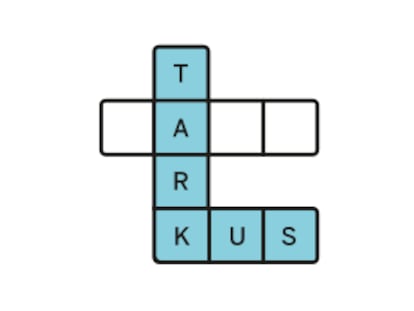One million deportees, the Trump administration’s difficult goal for its first year
The figure has been mentioned as the objective of the mass expulsion operation, but logistical and financial obstacles cast doubt on whether it can be achieved


The figure has been swirling around immigration policy messages for months. “We can start with one million,” J. D. Vance repeatedly said as the November 5 presidential election approached, and he continued to cite it after he and Donald Trump had won. The Republican president’s public statements have been more ambiguous, but no less ambitious: he has repeatedly promised the “largest deportation in history.” Although this is only a fraction of the at least 11 million undocumented immigrants in the United States, deporting one million immigrants in a year would fulfill the promise, far exceeding Barack Obama’s average of 400,000 annual deportations. However, analysts and experts view the figure — which appears to be completely arbitrary — with suspicion and point to logistical and financial obstacles that cast doubt on its feasibility.
According to several anonymous sources within the Trump administration cited in a Washington Post article, the figure of one million deportees is mentioned practically daily. Stephen Miller, the senior White House adviser credited with crafting Trump’s anti-immigrant policies, is in constant conversation with the Department of Homeland Security and other federal agencies to find a way to move toward that goal as soon as possible. But the pace of deportations in the first months of Trump’s second presidency — still below Joe Biden’s average — is the clearest evidence that it is not so simple to expel thousands of people overnight.
“The number being discussed, at least under current resources, is definitely out of reach. Deportations depend on three basic elements: arresting people, detaining them, and deporting them. And all of these components require an immense amount of resources,” Colleen Putzel-Kavanaugh, an analyst at the Migration Policy Institute think tank, explains by phone. The Republican administration is seeking Congressional approval of a new law that, among many other things, would provide a huge new budget allocation for immigration enforcement. However, even if Congress passes it — which is far from certain because it is already generating internal divisions within the party — it would still require hiring and training people, signing detention contracts, and probably adapting or building new centers for this purpose, as well as managing deportation flights.
Another reason why it’s difficult for Trump to deport one million immigrants in a year is that irregular border crossings have virtually dried up, as most expulsions have historically been quick returns, which are easier to carry out. After he declared an emergency at the border and militarized it, encounters with undocumented immigrants dropped to 7,000 in March, the lowest number in decades.

Furthermore, Putzel adds, since deportation must be ordered by a judge in court, the current backlog of cases — approximately 3.7 million for some 700 immigration judges — creates a virtually insurmountable obstacle, as a person can wait months or even years for a court date. “People who are in the middle of deportation proceedings are likely facing a long wait to get through it. That’s not the case for those who already have a deportation order. They could potentially be removed immediately.”
The latter appears to be the administration's strategy. There are 1.4 million immigrants with active orders who cannot be deported because their countries of origin are not open to receiving them. With this in mind, according to official records and various reports, the Trump administration is negotiating with up to 30 countries to accept deported foreign citizens. Although this has already been done in recent months, notably with Mexico, Costa Rica, Panama, and El Salvador, expanding this system could significantly boost the pace of deportations.
The announcement of a fine of nearly $1,000 a day for people with an active deportation order also clearly seeks to pressure these migrants to leave the country of their own volition, in what the administration has come to call “self-deportation.” The White House asserts that this form of deportation is on the rise, demonstrating that the administration’s extreme hostility toward migrants has a clear objective. However, it has provided no data or evidence of this.
This opacity has been a constant in the months since Trump returned to the presidency. The government stopped publishing monthly statistics on the activities of immigration agencies, as a congressionally funded office has done for years. Instead, the available numbers come from statements by officials that cannot be corroborated.
A preliminary analysis of available data by the Migration Policy Institute tentatively supports the logjam theory: while immigration arrests have increased, deportations have not. The immigration agency is on track to detain nearly 240,000 immigrants this fiscal year, more than double the previous year. But deportations, at the current rate, would barely reach 212,000, down from 271,000 the previous year, most of which were people detained after crossing the border without papers.
Still, reaching the million deportations mark in a year seems almost impossible, but a drastic acceleration in the pace of expulsions could still make it a reality. Perhaps the administration doesn’t care so much about reaching it, as long as it can boast about the implementation of its immigration policy, as when it deported more than 200 Venezuelans accused, many falsely, of belonging to the Tren de Aragua criminal organization. It’s easy to say “one million deportees,” whether or not it can be corroborated, given that the figure, as Putzel says, doesn’t seem to be based on anything concrete beyond being a “big, round number.”
Sign up for our weekly newsletter to get more English-language news coverage from EL PAÍS USA Edition
Tu suscripción se está usando en otro dispositivo
¿Quieres añadir otro usuario a tu suscripción?
Si continúas leyendo en este dispositivo, no se podrá leer en el otro.
FlechaTu suscripción se está usando en otro dispositivo y solo puedes acceder a EL PAÍS desde un dispositivo a la vez.
Si quieres compartir tu cuenta, cambia tu suscripción a la modalidad Premium, así podrás añadir otro usuario. Cada uno accederá con su propia cuenta de email, lo que os permitirá personalizar vuestra experiencia en EL PAÍS.
¿Tienes una suscripción de empresa? Accede aquí para contratar más cuentas.
En el caso de no saber quién está usando tu cuenta, te recomendamos cambiar tu contraseña aquí.
Si decides continuar compartiendo tu cuenta, este mensaje se mostrará en tu dispositivo y en el de la otra persona que está usando tu cuenta de forma indefinida, afectando a tu experiencia de lectura. Puedes consultar aquí los términos y condiciones de la suscripción digital.
More information
Archived In
Últimas noticias
Most viewed
- Reinhard Genzel, Nobel laureate in physics: ‘One-minute videos will never give you the truth’
- Oona Chaplin: ‘I told James Cameron that I was living in a treehouse and starting a permaculture project with a friend’
- Pablo Escobar’s hippos: A serious environmental problem, 40 years on
- Why we lost the habit of sleeping in two segments and how that changed our sense of time
- Chevy Chase, the beloved comedian who was a monster off camera: ‘Not everyone hated him, just the people who’ve worked with him’










































